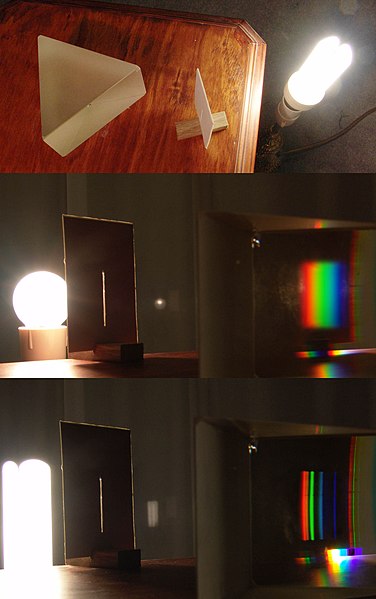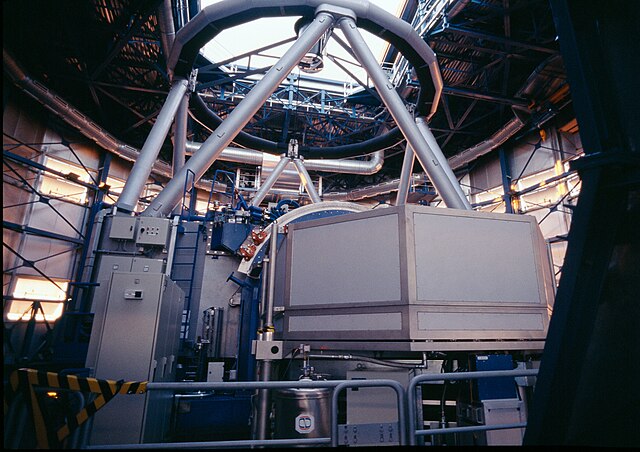An optical spectrometer is an instrument used to measure properties of light over a specific portion of the electromagnetic spectrum, typically used in spectroscopic analysis to identify materials. The variable measured is most often the irradiance of the light but could also, for instance, be the polarization state. The independent variable is usually the wavelength of the light or a closely derived physical quantity, such as the corresponding wavenumber or the photon energy, in units of measurement such as centimeters, reciprocal centimeters, or electron volts, respectively.
Optical spectrometer
Internal structure of a grating spectrometer: Light comes from left side and diffracts on the upper middle reflective grating. The wavelength of light is then selected by the slit on the upper right corner.
A very simple spectroscope based on a prism
The KMOS spectrograph.
Spectroscopy is the field of study that measures and interprets electromagnetic spectra. In narrower contexts, spectroscopy is the precise study of color as generalized from visible light to all bands of the electromagnetic spectrum.
An example of spectroscopy: a prism analyses white light by dispersing it into its component colors.
A huge diffraction grating at the heart of the ultra-precise ESPRESSO spectrograph.
UVES is a high-resolution spectrograph on the Very Large Telescope.
Atomic spectra comparison table, from "Spektroskopische Methoden der analytischen Chemie" (1922).








